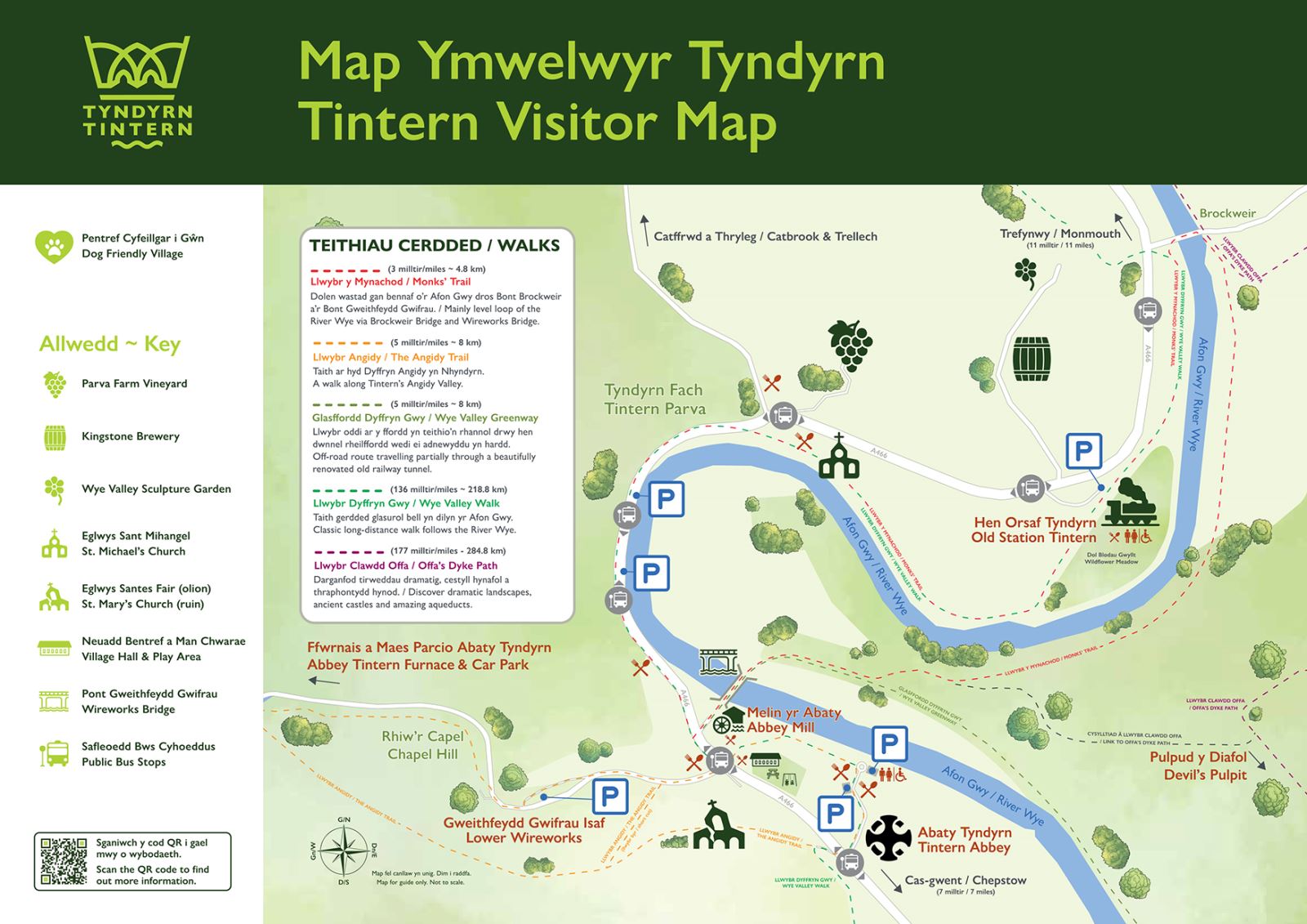Tintern village can be found in the heart of the scenic Wye Valley National Landscape, nestled against the west bank of the River Wye. It's small size belies it's historical significance, with Tintern Abbey the real jewel in the crown of the valley.
Few fail to be moved by their first glimpse of Tintern Abbey. The atmospheric ruins of this Cistercian monastery have long amazed and impressed visitors. Already a must-see destination by the 18th century (as part of the Wye Tour along the river), Tintern Abbey has inspired poems by William Wordsworth and Alfred Lord Tennyson and paintings by JMW Turner.
Tintern has touched the world in many ways. It was the centre of industry for hundreds of years - conservation work has revealed that there were countless forges and furnaces along the river Wye and its tributaries in the 16th, 17th and 18th centuries. Brass was first made in Britain at the Abbey Forge and it was the first place to make wire on an industrial scale, most notably the first transatlantic cable was made here.
Today the village is a hub for walkers and cyclists with a number of circular routes and long distance trails starting / passing though the village. The new five-mile Wye Valley Greenway route links the lower Wye Valley, running along the disused Wye Valley Railway and through the spectacular 1km Tidenham tunnel.
Tintern is a dog-friendly village so wherever you go, your four-legged friend is also guaranteed a warm welcome.
Tintern is served from both Monmouth & Chepstow by the number 69 Wye Valley bus, with services every hour. See the full bus timetable here.
Tintern Visitor Survey
If you've visited Tintern before then complete our Tintern Visitor Experience Survey (closing date 30th September 2024) for a chance to win a £25 voucher for the Tintern Old Station Tearooms (plus four free tickets for the miniature train).
Link to the Tintern Visitor Survey
Tintern Visitor Map

Download the Tintern Visitor Map here



 to add an item to your Itinerary basket.
to add an item to your Itinerary basket.